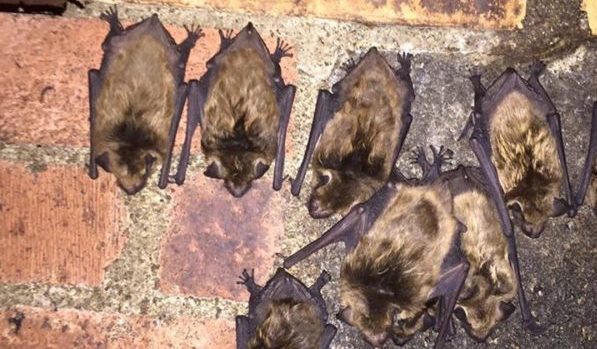Big Brown bats are one of the most common species native here in Virginia. They are often the culprit behind many residential and commercial bat infestations. Continue reading to learn more about Big Brown bats. With a better understanding of the species, you may be able to protect your home or building from bat damages.

Big Brown Bats
The Big Brown Bat (Eptesicus fuscus)
The Big Brown bat is scientifically named Eptesicus fuscus, which loosely translates to “dark” or “black” in Latin. It is closely related to other American species of bat within the Eptesicus genus, such as the Brazilian brown bat (Eptesicus brasiliensis), the Argentine brown bat (Eptesicus furinalis), and the diminutive serotine (E. diminutus).
Range and Habitat
They are wide spread throughout North America. In fact, it is colloquially referred to as “the most widespread Pleistocene bat in North America.” However, its range also extends throughout Central America, the Caribbean, and even some parts of farthest northern regions of South America.
They are capable of thriving in urban, suburban, and rural environments, generally choosing a roost for the summer and another roost for winter hibernation. They often choose roosts that are quite, private, sheltered, and warm. For this reason, they are often found in hollowed out trees, caves, abandoned mines, attics and crawl spaces, storm drains, log piles, and specially-made bat houses.
Diet and Behavior
Big Brown bats are insectivores, meaning they primarily consume insects. Their favorites include mosquitos, gnats, flies, beetles, termites, moths, and any net-winged insect. They hunt for their prey at night, between the hours of dusk and dawn, using their built-in biosonar abilities called echolocation. Echolocation does not substitute for sight, as bats see quite well on their own; however, it gives them a significant advantage for diving and darting for prey with accuracy and speed.
Bats are not solitary; they often live in large colonies. This, coupled with the fact that a single bat can consume as much as 1,000 insects or more in one evening, makes Big Brown bats a significant predator of agricultural pests. This means they have a positive ecological impact on our surrounding environments.
Reproduction
Big Brown bats mate in the fall. After mating, female bats separate from the males and live in their own maternity colony. Females give birth around May or June to only one single baby bat (pup), weighing an average of 3 g (0.11 oz). Although born tiny, they grow rather quickly, as much as half a gram per day. After as soon as 18 days after birth, they can begin to fly. A fun fact: bats are the only mammal on Earth capable of flying! Baby bats, or pups, are weaned from their mother’s care within 2 to 3 months.
Virginia Bat Removal and Control

Virginia Bat Removal and Control 804-729-9097
